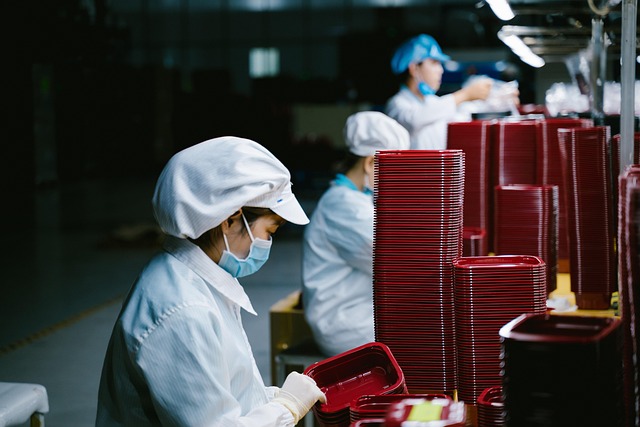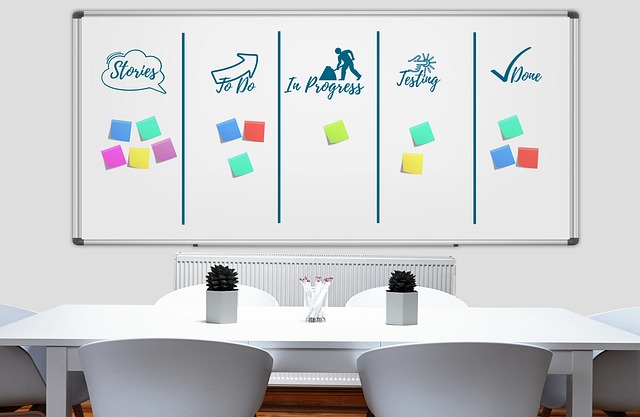The 5S Methodology, a lean management tool, transforms workplaces through five core principles: Sort, Set in Order, Shine (Clean), Standardize, Sustain. Implementing 5S training leads to continuous improvement, process standardization, and enhanced productivity by eliminating non-value-added activities. Regular audits and assessments ensure Lean practices become an integral part of the organizational culture, fostering a sustainable environment with minimal waste and maximal value.
In today’s competitive business landscape, systematic waste reduction is not just a sustainability goal but a strategic imperative. This article explores proven methodologies and principles designed to optimize workplace efficiency and minimize waste. We delve into the 5S methodology for structured sorting and organizational excellence, integrate Lean management principles into daily practices, and emphasize process standardization as a catalyst for continuous improvement. By embracing these strategies, organizations can achieve higher productivity, enhanced quality, and reduced costs.
- Understanding the 5S Methodology for Waste Reduction
- Integrating Lean Management Principles into Daily Practices
- Process Standardization: A Key to Continuous Improvement
Understanding the 5S Methodology for Waste Reduction

The 5S Methodology is a powerful tool in the realm of lean management and workplace organization, designed to systematically reduce waste and improve efficiency. This approach, rooted in Japanese industrial practices, encompasses five core principles: Sort, Set in Order, Shine (Clean), Standardize, and Sustain. Each step guides organizations through a meticulous process of evaluating and streamlining their operations, ensuring every activity adds value. By implementing 5S training, businesses can transform their workplaces into well-organized systems that enhance productivity while minimizing waste.
Through Sort, organizations identify and remove unnecessary items, simplifying workflows. Set in Order involves arranging tools and materials for easy access, reducing time wasted on searching. Shine (Clean) maintains a tidy environment, preventing contamination and improving quality. Standardize ensures consistent processes, facilitating continuous improvement and making it easier to identify and address new waste issues. Finally, Sustain emphasizes the ongoing nature of these practices, requiring regular reviews and adjustments to adapt to changing needs and stay ahead in process standardization.
Integrating Lean Management Principles into Daily Practices

Integrating Lean Management principles into daily practices is a transformative step toward systematic waste reduction. It begins with foundational techniques like 5S training, which involves sorting, setting in order, shining (cleaning), standardizing, and sustaining organized workspaces. This method not only enhances workplace organization but also lays the groundwork for continuous improvement by identifying and eliminating non-value-added activities.
Lean management encourages a culture of process standardization, where every task is analyzed to eliminate inefficiencies and reduce waste. By adopting these principles, organizations can streamline operations, improve productivity, and create a more efficient workflow. Regular 5S audits and continuous improvement initiatives ensure that Lean practices remain embedded in the organization’s DNA, fostering a sustainable environment where every action contributes to minimizing waste and maximizing value.
Process Standardization: A Key to Continuous Improvement

Process Standardization plays a pivotal role in achieving systematic waste reduction. By implementing 5S training and lean management principles, organizations can transform their workplace organization to eliminate inefficiencies. This involves creating standardized procedures for everyday tasks, ensuring every employee follows the same processes precisely. Such standardization facilitates consistent results, reduces errors, and minimizes unnecessary steps, ultimately leading to a leaner, more efficient operation.
Incorporating 5S continuous improvement methodologies further enhances this process. This system prompts regular assessments of workplace conditions, encouraging employees to identify and address inefficiencies proactively. Through constant evaluation and refinement, organizations can continually optimize their processes, fostering an environment where waste reduction becomes second nature, driving sustained improvements over time.
